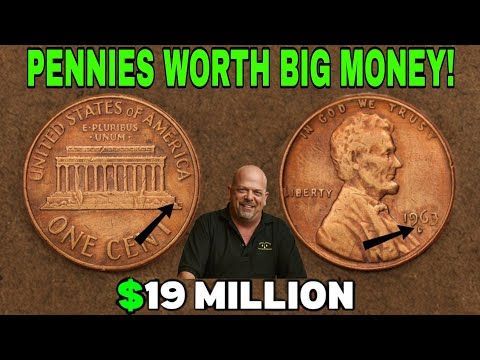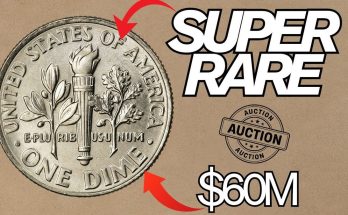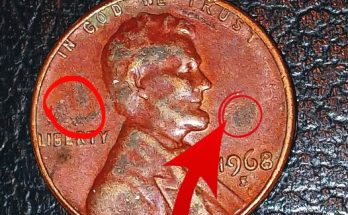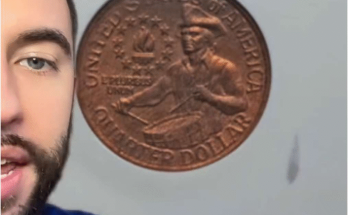Imagine reaching into your pocket and pulling out a coin that could be worth hundreds, thousands, or even hundreds of thousands of dollars. It sounds like a fantasy, but for collectors (known as numismatists), it’s a reality found within the humble one-cent piece: the Lincoln Penny. For over a century, since its debut in 1909, the Lincoln Cent has been the most collected coin in US history, and certain rare varieties and errors have become legendary treasures, with values skyrocketing into 2025 and beyond. Now is the perfect time to heed the call and start examining your loose change, penny jars, and old coin collections, because a fortune could be hiding in plain sight.
The extraordinary value of these pennies is rarely tied to their age alone; it’s almost always a combination of extremely low mintage, critical minting errors, or exceptional preservation, especially in the coveted “Mint State” or “Proof” conditions. Mistakes made at the U.S. Mint—like striking a coin on the wrong type of metal or having a die double the design—are what turn a one-cent coin into a five or six-figure investment. These unique anomalies are what collectors are fiercely hunting for in 2025.
The Legendary Errors: Million-Dollar Pennies
Certain Lincoln Cents stand at the pinnacle of rarity and value, with auction records to match. These transitional errors occurred during wartime when the U.S. Mint switched coin compositions:
- 1943 Copper/Bronze Penny: In 1943, pennies were supposed to be made of zinc-coated steel to conserve copper for the war effort. However, a few bronze planchets (coin blanks) from 1942 were accidentally struck with the 1943 die. These incredibly rare 1943 Bronze examples are worth a fortune, with the 1943-D Bronze coin being one of the most valuable, estimated to be worth $800,000 to over $2 million in top condition. The 1943-S Bronze is also extremely valuable, topping $500,000.
- 1944 Steel Penny: The reverse mistake happened the following year. In 1944, the composition was switched back to copper, but a handful of steel planchets were mistakenly struck. The 1944-S Steel is among the rarest, with values reaching $700,000 to $1 million.
- 1955 Doubled Die Obverse (DDO): This is one of the most famous error coins. It features dramatic doubling of the date and the word “LIBERTY”. Values for this particular error can range from $4,000 to over $16,000 for high-grade examples.
The Key Dates of the Lincoln Memorial Era (1959-Present)
While the Wheat Cent era (1909-1958) produced many of the absolute rarities, the later Lincoln Memorial Cent series has its own highly valuable errors and varieties. Many people assume coins from this era are only worth face value, which is a mistake! The key is looking for specific minting anomalies.
- The 1963 DCAM Proof: The 1963 Lincoln Cent, similar to the one in the photo, is generally common. However, a perfect 1963 Deep Cameo (DCAM) Proof specimen is a condition rarity. The ‘Deep Cameo’ designation signifies an exceptional, mirror-like background contrasting with a frosted image of Lincoln. One of these perfect DCAM examples has an auction record of over $40,250.
- 1969-S Doubled Die Obverse: This is an extreme rarity, considered the king of doubled die modern pennies, with one example selling for $126,500. The doubling is strong on the date and the lettering, so if you find one, the doubling will be clearly visible.
- 1992-D Close AM: A rare variety where the “A” and “M” in “AMERICA” on the reverse are closer than they should be. High-grade examples of the 1992-D version have fetched up to $20,000.
- 1983 Doubled Die Reverse: Look for doubling on the reverse text, specifically on the words “ONE CENT” and “UNITED STATES OF AMERICA.” The record price for this variety in top condition is approximately $15,000.
Your Coin Hunt Checklist
To find your own treasure, you need to know what to look for. Check your pennies for:
- Key Dates: Start with the years mentioned above, especially the Wheat Cents from 1909-1958, focusing on the lowest mintage years like 1909-S VDB, 1914-D, and 1931-S.
- Doubled Die Errors: Use a magnifying glass or jeweler’s loupe to examine the date and lettering for a distinct, clear doubling (not just a smudged or weak strike).
- Mint Marks: Check for the “D” (Denver) or “S” (San Francisco) mint marks below the date. Certain errors are exclusive to a particular mint mark, like the 1969-S DDO. The 1963 pennies from Denver (D) and Philadelphia (no mint mark) also show slight value differences in high grades.
- Condition and Color: Condition is everything. A coin that has never been circulated (Mint State) and retains its original red (RD) copper color is exponentially more valuable than a Brown (BN) or Red-Brown (RB) coin. A 1963 penny in circulated condition is only worth its copper metal value of about 2 cents, but a top-grade Red specimen can jump to over $2,350.
The potential for life-changing wealth is real, hidden in the millions of pennies currently in circulation. Don’t let these rare coins pass through your hands unnoticed. Start sifting through your change today—your next penny could be worth a fortune!



